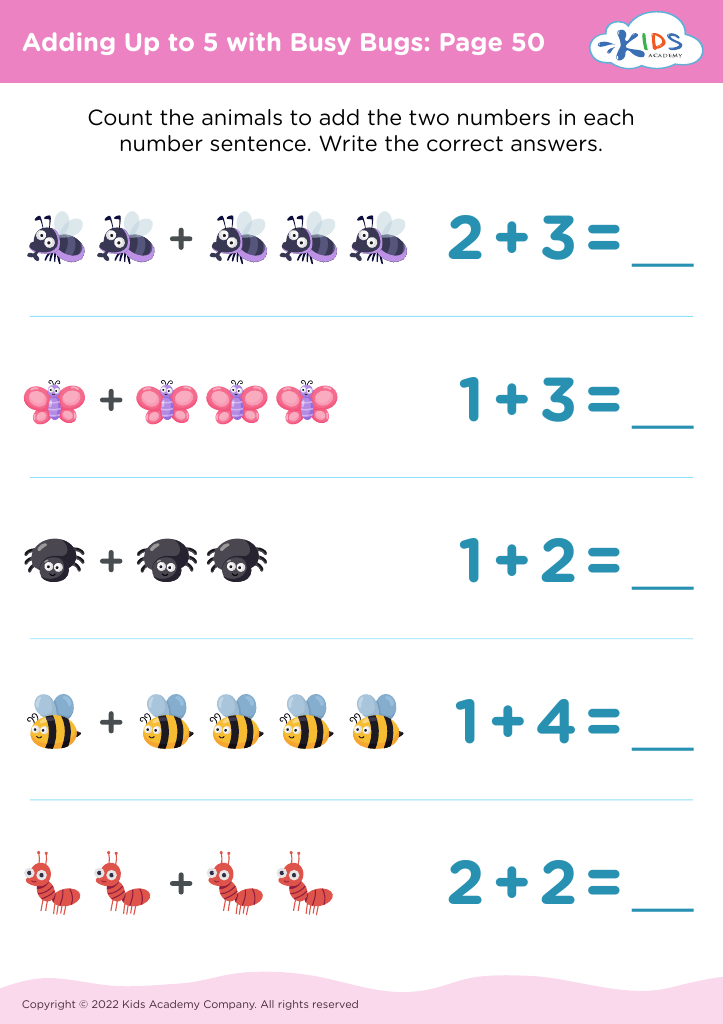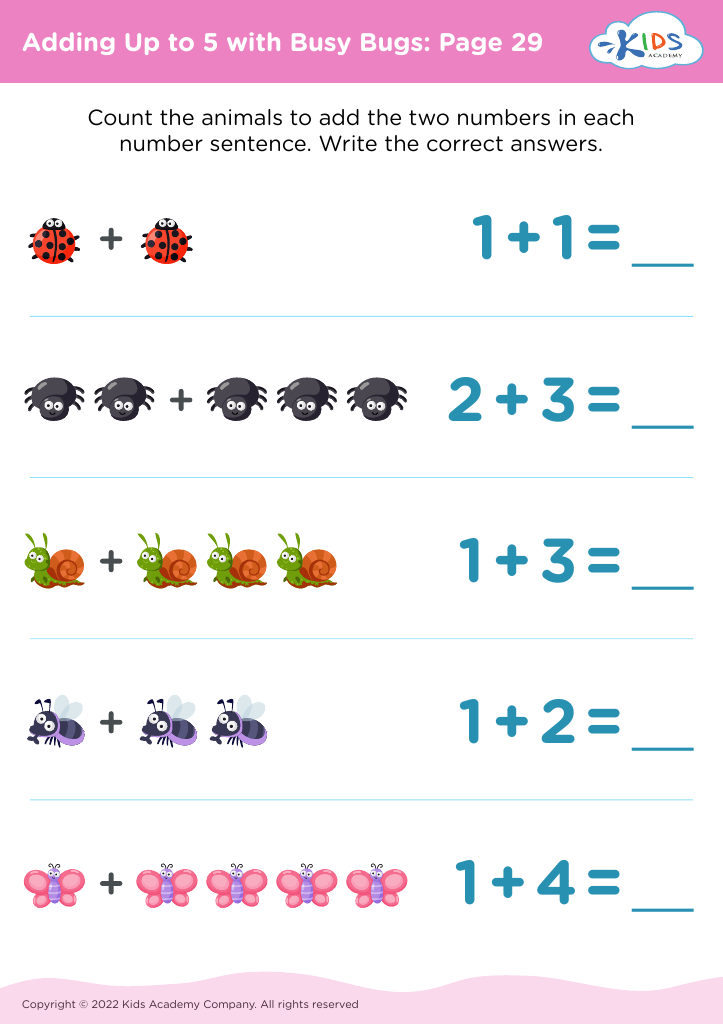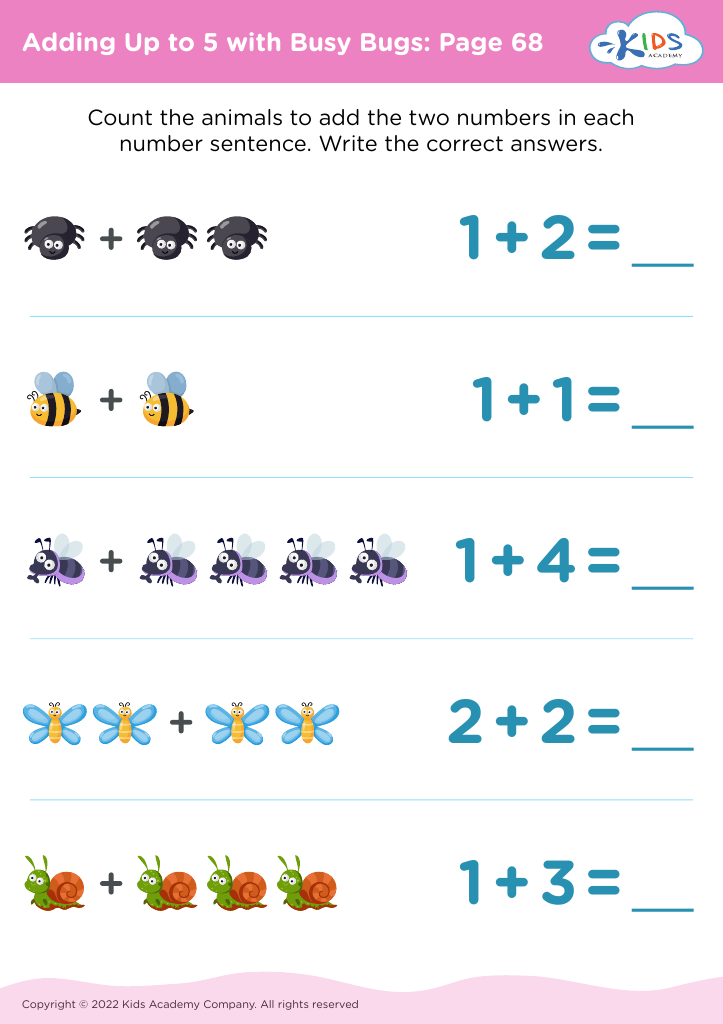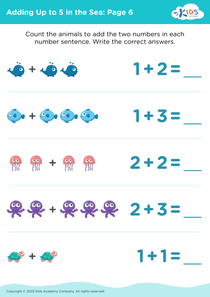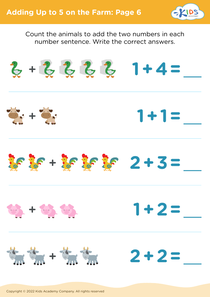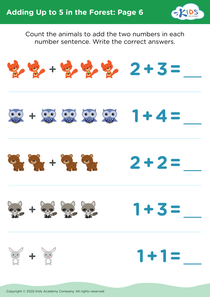Understanding Quantities Adding with Busy Bugs Worksheets for Ages 4-9
4 filtered results
-
From - To
Introduce young learners, ages 4-9, to the concept of quantities and addition with our "Adding with Busy Bugs" worksheets. These engaging activities feature adorable insects, making math fun and relatable. Designed to help children grasp basic arithmetic, these worksheets aid in understanding numbers, sizes, and sums through hands-on practice. Perfect for enhancing counting skills and number recognition, the colorful and interactive sheets cater to different learning styles, ensuring kids stay interested and eager to learn. Build a strong mathematical foundation for your child with these creative and educational resources. Perfect for home or classroom use!
Understanding quantities and adding concepts in early childhood are foundational skills that support a child’s mathematical development. The "Busy Bugs" approach, designed for ages 4-9, uses visually stimulating and engaging materials that make these concepts tangible and relatable. Parents and teachers should care about this method because it turns abstract mathematical concepts into concrete learning experiences.
At this developmental stage, children learn best through play, exploration, and visual aids. The Busy Bugs system leverages colorful, playful bugs to capture children's interest and enthusiasm, which motivates them to engage deeply with the material. By physically manipulating the bugs, children can better understand quantity, comparison, and addition concepts, making these crucial skills less intimidating and more accessible.
Moreover, early proficiency in these areas builds a strong foundation for future mathematical learning and problem-solving skills. Success in understanding basic mathematics fosters confidence, encouraging a positive attitude toward more complex subjects later on. Integrated into their everyday learning, Busy Bugs allows children to seamlessly transition from counting to simple addition, thereby creating a smoother, more enriching educational experience.
Therefore, by incorporating Busy Bugs into early learning, parents and teachers equip children with essential tools for academic success, grounded in a joyful and interactive approach to foundational math skills.
